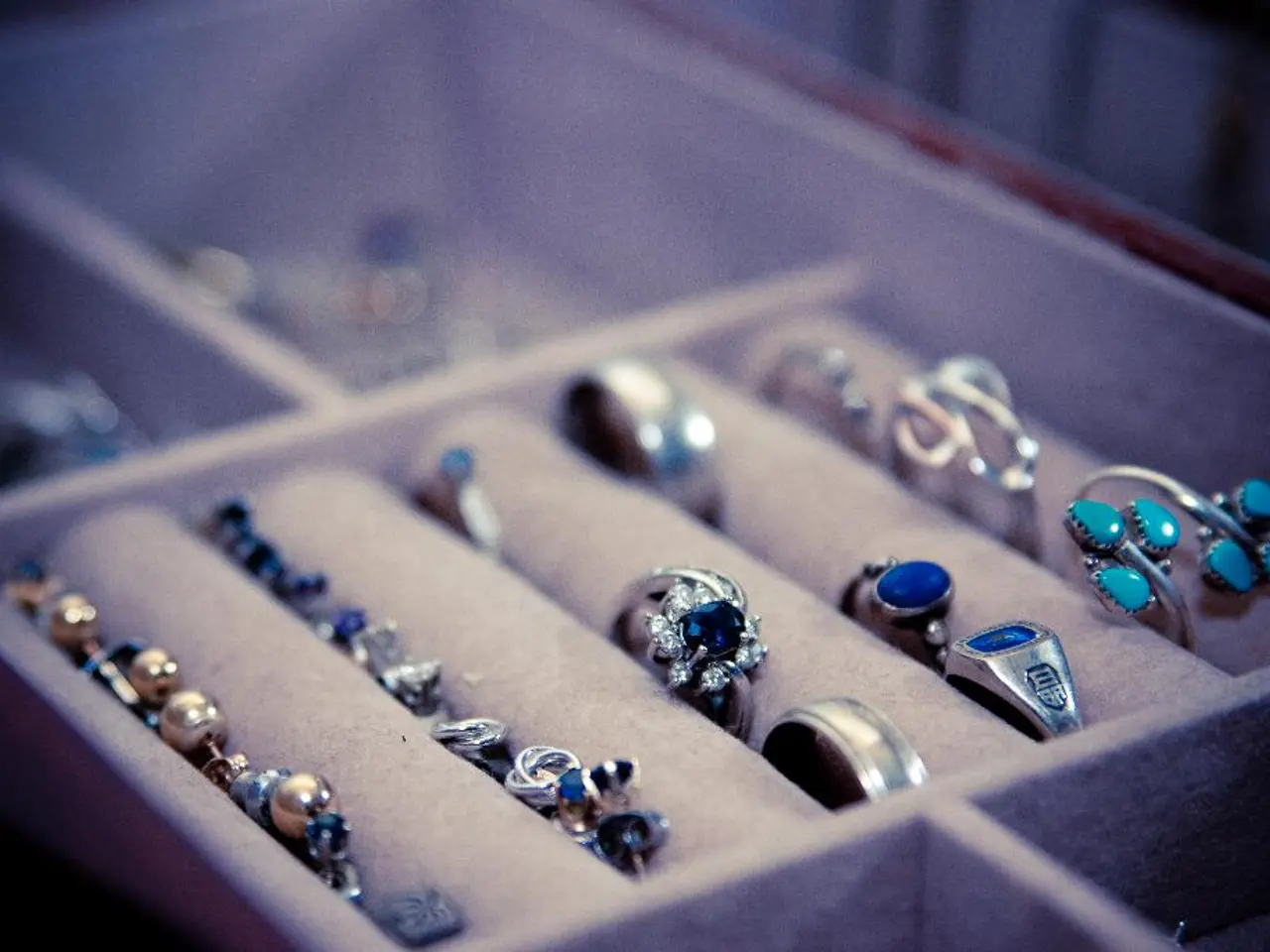Identifying Antique Edwardian Jewelry: A Guide
The Edwardian era, spanning from 1901 to 1910 during the reign of King Edward VII, marked a significant change in fashion, including jewellery. Known as the "Beautiful Age," Edwardian jewellery is characterised by delicate, feminine, and romantic designs that emphasise nature-inspired themes.
Distinctive Motifs and Designs
Edwardian jewellery motifs are distinctively characterised by delicate, feminine, and romantic designs, featuring garlands, bows, ribbons, floral elements, and lace-like filigree or openwork metal patterns. These motifs often emphasise nature-inspired themes such as stylised flowers, leaves, butterflies, moths, and vines, combined with intricate craftsmanship like milgrains (tiny beaded edges) and fine wirework.
Materials and Design Style
In contrast to other eras and design movements, Edwardian jewellery predominantly used platinum, enabling fine openwork, and featured diamonds and pearls as common materials. Sapphires, rubies, emeralds, and other gemstones were also common, with a soft, subtle, "white on white" colour palette. The design style was light, airy, ethereal, emphasising elegance and femininity.
Comparison with Other Eras and Design Movements
Compared to the Victorian era, Edwardian jewellery was lighter and more delicate, contrasting sharply with the later Art Deco movement, which features bolder geometric shapes, symmetry, and colourful contrasts. Edwardian jewellery was also influenced by but more restrained than Art Nouveau, which was more artistic and asymmetrical, while Edwardian pieces maintained elegance and refinement suitable for their aristocratic context.
Notable Pieces and Innovations
Famous artisans such as Cartier, Tiffany & Co., Boucheron, and Van Cleef & Arpels epitomised this style with their use of platinum, diamonds, delicate filigree, and romantic motifs, exemplifying the era’s ideals of grace and sophistication. Queen Alexandra favoured the 'dog collar' plaque style necklace and the column of 6-16 rows of pearls.
Single cut diamonds replaced rose cuts in Edwardian jewellery. The rivière necklace, a neck-encircling strand of graduating, millegraine-edged, bezel set diamonds, was also popular. Pearls were second to diamond in popularity during the Edwardian era.
Transition to the Art Deco Era
The flowing movement of Edwardian jewellery eventually blended into the geometrical, static, anticlassical, architectural style of the Art Deco era. However, Edwardian jewellery remains a testament to the refined elegance influenced by Victorian romanticism but lighter and more delicate, a truly beautiful era in jewellery design.
[1] "Edwardian Jewelry Style." The Gem Guide, thegemguide.com/jewelry-styles/edwardian-jewelry-style/. [3] "Edwardian Jewelry." National Jeweler, nationaljeweler.com/article/edwardian-jewelry/. [5] "Edwardian Jewelry." The Jewelry Loupe, thejewelryloupe.com/jewelry-styles/edwardian-jewelry/.
- To better understand the intricacies of Edwardian jewelry, enthusiasts may refer to publications such as "Edwardian Jewelry Style" on The Gem Guide.
- Aspiring gemmologists can enhance their knowledge through courses and workshops dedicated to Edwardian jewelry design.
- Fashion-and-beauty aficionados might draw inspiration from Edwardian pieces, as the era's jewelry reflective of the delicate femininity that permeated the lifestyle of the time.
- Home-and-garden enthusiasts could incorporate Edwardian-inspired motifs into their interior design, utilizing floral and filigree patterns to tastefully evoke the era's aesthetic.
- Travelers seeking a touch of history and elegance can tour notable museums and exhibitions to explore Edwardian jewelry from the early 20th century.
- Amidst general news, sports, food-and-drink, and education-and-self-development stories, one can find occasional features on remarkable Edwardian jewelry pieces, their makers, or their impact on contemporary jewelry design.




